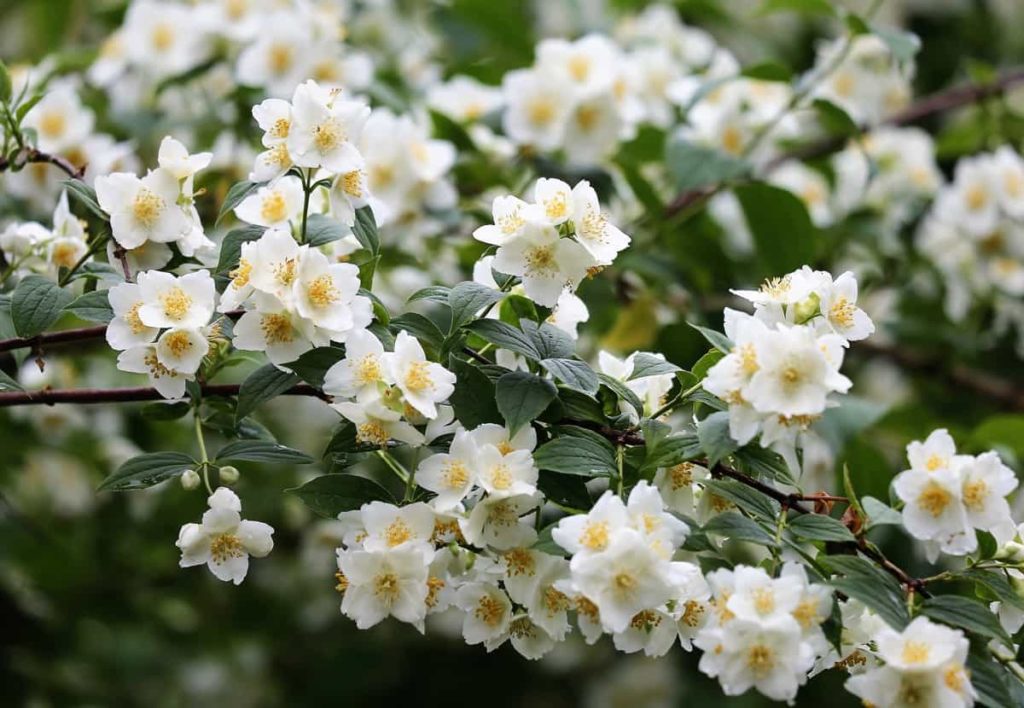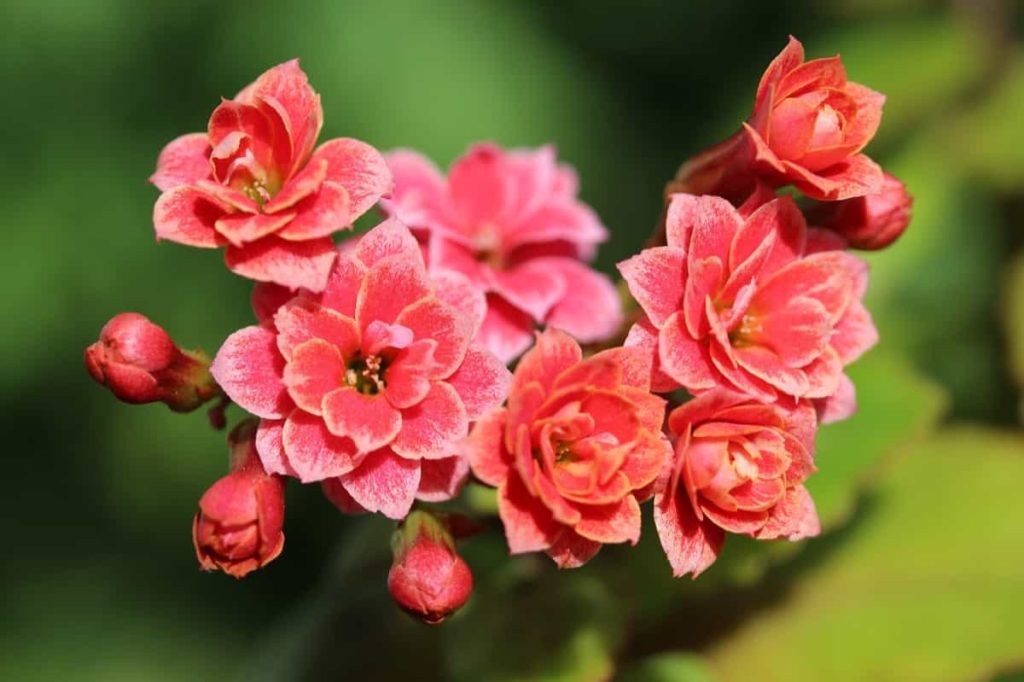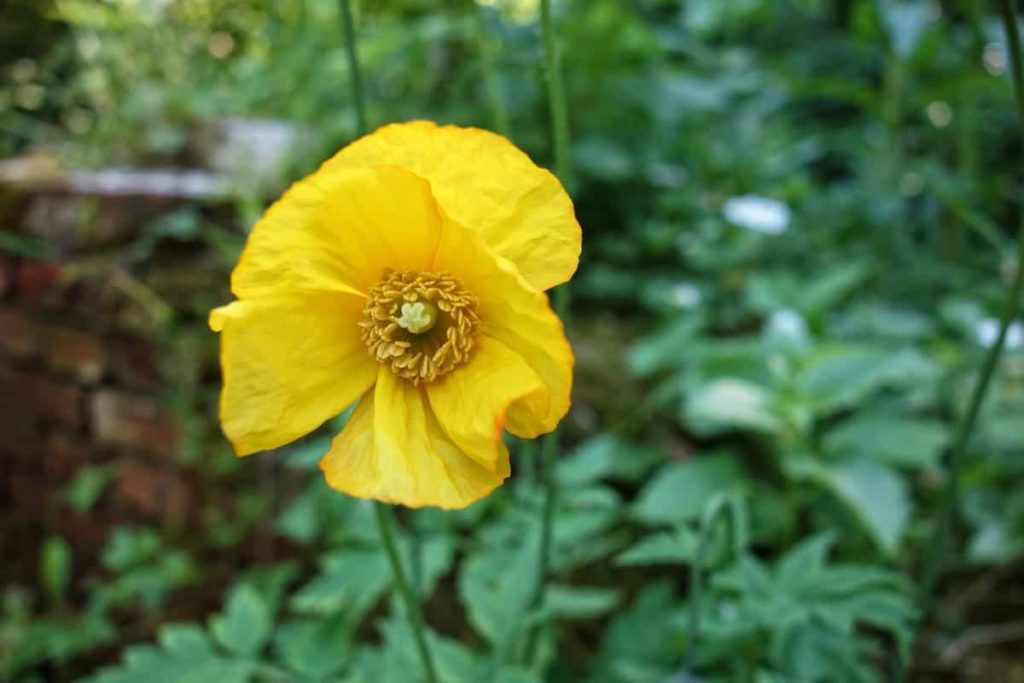Flowers are popular because they add a new appearance and fragrance to any room. Waiting for things to emerge in April may be a clock-watching game if you have a new garden bed. Instead, plant fast-growing flowers that will provide you with beauty and scent in a short period.

Flowers that grow quickly provide color and shape to any section of the garden. The quickest flowers grow from seed and are simple to establish and develop. Let’s check out some fast blooming flowers to grow from seeds in pots, indoors, backyard, and raised bed.
Fast blooming flowers to grow from seeds – Indoors
Jasmine
Jasmines need intense light, such as that provided by a sunny window, to grow inside. Give it plenty of air circulation during winter if you want white blossoms. Every day, the Jasmine plant can withstand 3 – 4 hours of direct sunshine.
This beautiful houseplant requires very little care. It can tolerate a small amount of your carelessness if you neglect to water your plants on time. Jasmines will have a long life if properly cared for. This is the only blooming plant that smells as lovely as it looks. Its pleasant smell will fill your home all year.
Anthrium
Anthuriums give long-lasting blossoms in colorful colors of pink, crimson, lavender, and white if planted in good light. They can also survive a long time if you can stand to cut them off the plant. Even when not in flower, its glossy green leaves are eye-catching. It requires medium to bright sunshine; temperatures ranging from 65 to 80 degrees Fahrenheit; and soil that is uniformly wet, but only slightly damp in the fall and winter. This plant’s flowers and leaves are both heart-shaped.
Kalanchoes
The lovely color of the petals that the kalanchoe blossoms into is what distinguishes it. They want bright, natural lighting. Keep these plants far from direct sunshine if you don’t want them to burn. Instead, they are ideal for a home desk. Kalanchoe flourishes when the soil is dry, as do other succulents.
In case you miss this: How to Make Flowers Bloom Fast, More, Tips, Ideas and Techniques

Instead of focusing on appropriate drainage, they produce thick fleshy leaves for retaining water. The kalanchoe, on the other hand, likes to be uniformly wet, especially from spring through autumn. You can help your gorgeous kalanchoes to blossom by giving them equal amounts of sunlight and full darkness.
Christmas cactus
This is a low-maintenance plant, and it’s also simple to reproduce. The Christmas cactus produces flowers in red, pink, orange, white, and other colors even under the most neglected settings. The Christmas cactus can be kept in low light or direct sunlight. Watering is as simple as giving it sufficient water to keep the soil lightly moist.
Flowering maple
These crimson, pink, orange or yellow blossoms dangle like colorful lanterns amid the leaves of blooming maples. For added interest, several kinds feature splotched or variegated leaves. Grow it as a tree, cut it back and keep it shrubby, or you even keep it in a basket. This quick-growing plant is almost always in bloom. This requires bright to strong light, temperatures ranging from 65 to 75 degrees Fahrenheit, and soil that is equally wet.
Fast blooming flowers to grow from seeds raised bed garden
Daylilies
Planting daylilies as single plants or in mass as a land cover for a slope, these beauties will brighten any garden. Daylily care is so simple, yet these plants are so resilient that some seem to even neglect it.
Daylilies bloom best when grown in full sunlight and in wet, well-drained soil. Dark-colored varieties in hot locations should be given some midday shade to help them preserve their bloom color. Daylilies, when planted correctly, will blossom for years with minimal care. Other than an annual infusion of compost, they do not require fertilizing.
Annual poppies
Poppies are a simple plant to cultivate from seed. They produce a lot of seeds in the late summer and fall, which may be picked when they’re mature on a dry day. Once the seed has been stored in a cool, dry place in a paper bag throughout the winter, it may be spread in the spring to create new plants.
In case you miss this: Top 10 Flowers to Grow in Pots

Poppies thrive in either a sunny or somewhat shaded location. Annual and biennial poppies thrive in a broad range of soil conditions, including very poor and even rocky soils where nothing else thrives. Oriental poppies grow best in deep, rich, well-drained soils.
Aubrieta
If your site fits some basic growth criteria, Aubrieta, a bright ground cover, is an excellent contender for edging your walks or in raised beds. When the abundant magenta blooms fade, the grayish-green leaves form a lovely mat that covers barren places behind between paving stones on a garden walk. Aubrieta grows best in well-draining and alkaline soil in full sun.
The foliage begins to die back in midsummer and will benefit from a strong shearing. As a member of the mustard family, this is a hardy plant that needs little attention. Once grown, it has a high tolerance for dryness and is resistant to deer nibbling. Insect pests rarely trouble Aubrieta. Downy mildew can affect plants that thrive in wet, gloomy conditions. Provide adequate light and space for air movement to prevent this fungal illness.
Germaniums
Geranium plants’ requirements will vary depending on location and how they are grown. Geraniums require a lot of light to bloom inside, but they may also survive low light levels. They also require temperatures in the range of 65-70 degrees Fahrenheit during the day and 55 degrees Fahrenheit at night.
These plants must also be cultivated in well-draining potting soil. Geraniums need wet, well-draining soil similar to that found in indoor potting soil, with equal parts soil, peat, and perlite. Place your geraniums in a place that receives at least six to eight hours of direct sunshine. Because these plants require cold protection, wait until the threat of frost has gone before planting.
Bell flowers
Bellflower plants are cheerful perennial blooms with pleasant nodding heads. The plant is native to many areas with chilly nights and moderate temperatures, making it excellent for cultivating bellflowers. Bellflowers bloom most heavily in June and July, but in some regions, they may dazzle you with flowers until October.
In case you miss this: Top 18 Flowers to Grow on the Terrace

The main feature is the upturned, open cup-shaped blooms in pink and white, but typically lavender or light blue. The plants will spread naturally over time, and the lower growing kinds make the good ground cover. Most bellflowers bloom in July and continue to bloom until frost. It is not necessary to be an expert to care for bellflowers.
They, like other perennials, are hardy plants that can withstand a wide range of harsh weather and dry conditions. Deadheading bellflowers promote more flowers and a longer-lasting show. You may also revitalize the plant by cutting it down to the ground from the winter season to early spring. Furthermore, certain bellflower kinds are invasive, and seed heads must be removed before they spread.
Fast blooming flowers to grow from seeds in the backyard
Delphiniums
Delphinium flowers add a splash of color to the summer garden with their spectacular, spiky blossoms on tall, occasionally towering stems. Delphiniums are often planted in the rear of the garden, where flower spikes can grow to be 2 to 6 feet tall. Delphinium flowers are frequently placed in clusters or masses. Shorter cultivars can be used in various parts of the garden.
Plant delphiniums in a sunny location with regularly wet soil. Don’t let them become too dry. Mulch aids in moisture retention and keeps roots cold. When planting delphinium plants in slightly alkaline soil pH, the performance of this specimen improves. The soil should be well-drained.
In case you miss this: Top 15 Flowers to Grow in the Backyard

Another component of delphinium care that the gardener must get perfect in order for the beautiful blooms to occur is sun exposure. Gentle morning light is desirable to delphinium plants, which are sensitive to temperature extremes. Provide midday shade, especially if you live in a hotter climate.
Red valerians
It does not take long for red valerian plants to develop and blossom. They will grow if planted in well-drained, somewhat rich soil. You will see a fully-grown plant with all of its flowering beauty in 2 to 5 years. When all growing conditions are met, it may reach a height of 24″ – 36″ inches and a width of roughly 20 inches. This plant is popular among gardeners because it blooms frequently. Flowering occurs irregularly in early summer.
The inflorescences are huge and spectacular, with little blooms measuring less than 1inch in diameter. The leaves are a dark, glossy gray-green, and the flowers are scarlet. They feature five petals and a spur, and they bloom in little spherical clusters. They have a brick or purplish-red blooms that are mildly aromatic. This can, however, range between darker and brighter tones of red.
Scabiosa
Scabiosa is a perennial that produces lavender-blue, lilac, or creamy blooms on long stalks and takes little care other than frequent deadheading to enable new buds to grow and bloom. Low winter temperatures are not a problem for the plant. Pincushion flowers are typically cultivated from seed, but container-grown plants are also available.
They may be planted from seed inside in early spring or sown straight in the garden once the danger of frost has gone. Scabiosa should be properly watered after planting. Their general maintenance is low, with the exception of watering during extremely dry periods, since rainfall is usually sufficient to satisfy their demands.
Feverfew
Sow seeds just after the last frost, gently covering them with a quarter-inch of earth. Keep the soil wet until the seeds germinate. In the absence of rain, plants need to be watered a couple of times each week to maintain roots moist all year. Feverfew can not tolerate dry circumstances and loves to thrive in slightly damp soil, so offer enough water to keep the soil moist but not waterlogged.
In case you miss this: Top 20 Flowers To Grow In A Greenhouse

These plants require either full sun or some shade. These thrive on well-drained loamy soil with a pH range of 6.0 to 6.7. In the absence of rain, water them twice a week to keep the soil evenly moist. If you’re growing on poor soil, use a balanced fertilizer in the spring.
Calendula
These are annuals that are easy to raise from seed. They self-seed rapidly in beds and range in color from yellow to orange. The calendula flower, often known as the blossoming herb, is an annual that will quickly reseed. Too much calendula care might result in stunted or delayed growth.
The key to cultivating abundant calendula plants is poor to ordinary, well-draining soil and just occasional irrigation after plants are established. Calendulas, like other herbs, are flexible and low-maintenance. Roots will frequently adapt to the area supplied. The marigold can be planted in backyards in full sun to partial shade. Flowers live longer in filtered light or dark settings since the calendula enjoys chilly weather.
Disclaimer: The above analysis is only assumed (not proved) to provide great results when practiced. We are not responsible for any errors that arise on this website or from any decision or action taken as a result of using this site.
- How to Grow Tomatoes Organically at Home: A Comprehensive Guide
- Organic Gardening on a Budget: Low-Cost Methods and Materials
- Gongura Seed Germination and Planting Methods
- Cabbage Seed Germination and Selection
- Broccoli Seed Germination and Selection
- Asparagus Seed Germination and Variety Selection
- Seasonal Flower Gardening: Best Practices for Spring, Summer, Fall, and Winter
- How to Grow Hibiscus from Flower
- Plantation Ideas for Home Decoration: A Beginners Guide
- Flower Garden Designs and Layouts for Beginners
- Planting and Spacing Techniques in Papaya: A Beginner’s Guide
- Growing Gold: Essential Techniques for Planting Pineapples
- How to Make Kalanchoe Plant Bushy: Home Remedies and Solutions
- 11 Reasons Why Your Gardenia is Not Blooming: Home Remedies and Solutions
- Eco Elegance: The Guide to Designing a Drought-Tolerant Landscape
- Gardening on a Slope: Strategies for Hillside Landscaping
- Nourish and Flourish: Top Organic Mulches for Thriving House Plants
- Everything You Want to Know about Indian Mogra Flower: Discover Uses and Growing
- Green Thumb Success: Expert Tips for Cultivating Greenhouse Pumpkins All Year Round
- Maximize Growth & Flavor: The Ultimate Guide to Companion Planting in Herb Gardens
- How to Control Rhododendron Problems Naturally: Home Remedies and Organic Ways to Fix Them
- Natural Magic: The Remarkable Benefits of Cinnamon for Plants
- Best Steps to Revive Dying Tulip with Natural and Organic Treatment
- 10 Reasons Why Your Angel Trumpet is Not Blooming: Remedies and Treatment
- How to Fix Periwinkle Leaf and Flower-Related Problems: Natural Remedies and Solutions
- How to Fix Zinnias Leaf and Flower Problems: Discover Natural and Home Remedies
- Organic Steps to Induce Lemon Tree Flowers: A Comprehensive Guide
- Bloom Booster: Crafting the Perfect Homemade Bougainvillea Fertilizer
- Optimizing Growth: A Guide to Applying NPK Fertilizer for Potted Plants
- 10 Best Homemade Fertilizers for Rubber Plant: DIY Recipes and Application Method
- How to Boost Female Pumpkin Flowers: Effective Steps for More Flowers and High Yields
- Transform Your Indoor Garden: Top Benefits of Pink Salt for Houseplants
- 10 Best Homemade Fertilizers for Peacock Plants (Calathea): Easy DIY Guide
- Unlock Blooms: 9 Reasons Why Your Potted Chrysanthemum is Not Blooming
- 8 Reasons Why Your Potted Hibiscus is Not Blooming: Fix it with Simple Solutions
- Unlock Blooms: 9 Key Reasons Your Potted Frangipani Won’t Flower